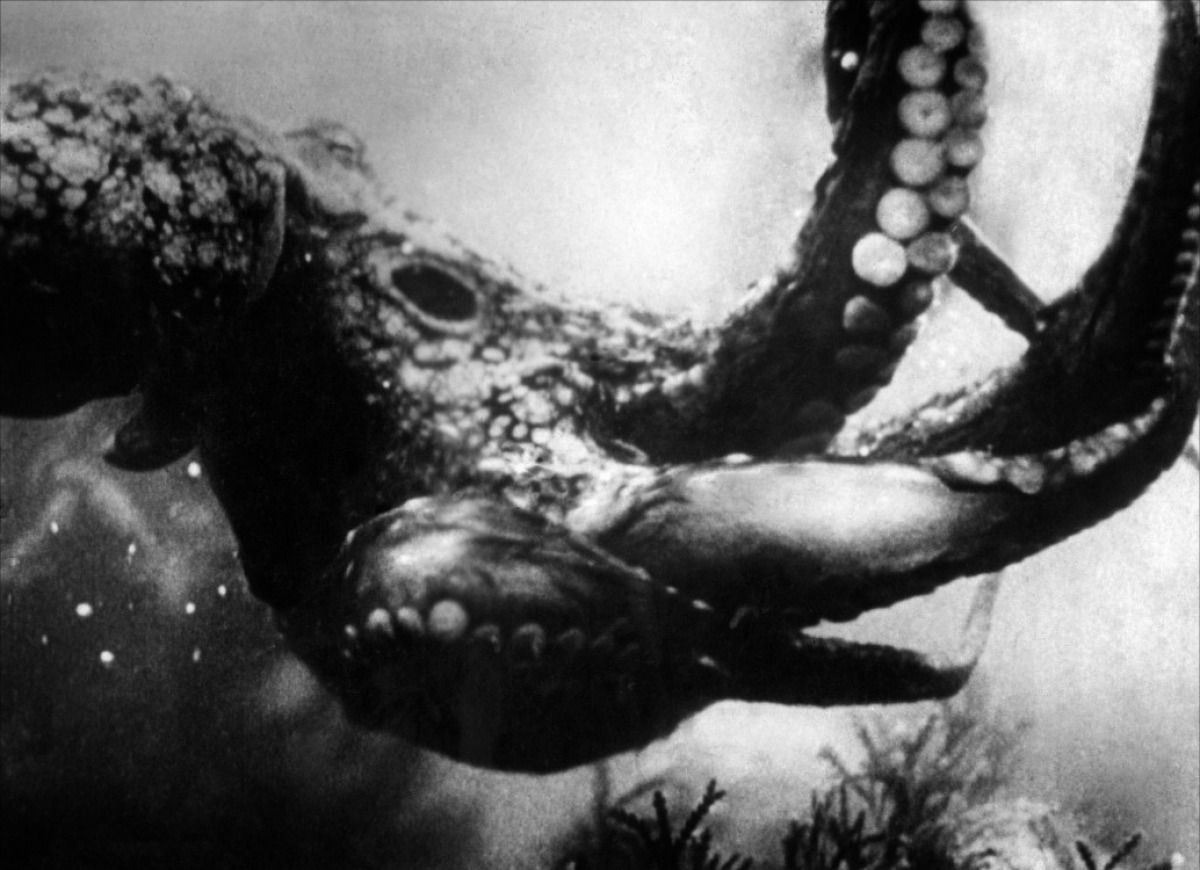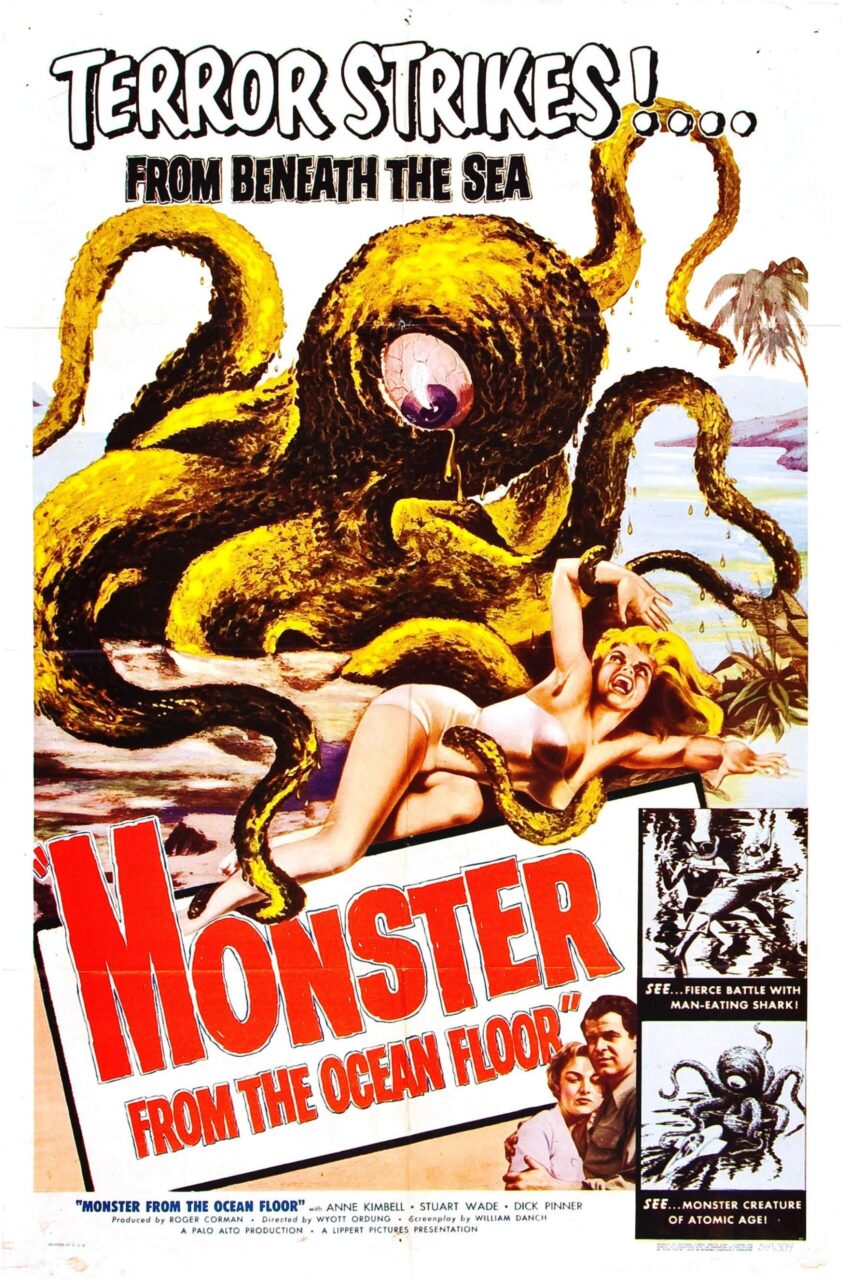Crew
Director – Wyott Ordung, Screenplay – William Danch, Producer – Roger Corman, Photography (b&w) – Floyd Crosby, Music – Andre Brummer, Production Design – Ben Hayne, Submarine Built by Aerojet General. Production Company – Palo Alto Productions.
Cast
Anne Kimbell (Julie Blair), Stuart Wade (Steve Dunning), Wyott Ordung (Pablo), Dick Pinner (Dr Baldwin), Inez Palange (Tula), Jack [Jonathan] Haze (Joe)
Plot
Julie Blair is an American graphic artist holidaying along the Pacific coastline in Mexico. She encounters marine biologist Steve Dunning as he emerges in his small one-man submarine near her on the beach. Steve proceeds to woo her. A local boat crew come seeking help in determining what happened to a diver who has mysteriously vanished from inside his suit. Julie starts investigating stories that the locals tell about a sea monster that first appeared in 1946. Though initially dismissive, Steve comes up with the notion that the monster was created by underwater atomic testing at nearby Bikini Atoll. Julie becomes determined to prove the monster’s existence.
The greatest footnote that Monster from the Ocean Floor usually has in film annals is that it was the first (solo) film made by legendary B movie producer-director Roger Corman, who, upon this occasion, was working in a producer capacity. Corman had previously worked as a co-producer on Highway Dragnet (1954) earlier that same year but here sank his own money into the film and as a result ended up launching his career. There are several other interesting names on the credits. Director Wyott Ordung racked up a credit the previous year as screenwriter of legendary Z movie classic Robot Monster (1953). Jonathan Haze, here billed as Jack Haze, later became a stock player in a number of Roger Corman films, most notably as Seymour in the original The Little Shop of Horrors (1960).
Outside of the Roger Corman connection, film or genre historians usually give Monster from the Ocean Floor little time. And for good reason, as it is a forgettable B movie in all ways. It was made the year following the success of The Beast from 20,000 Fathoms (1953) and came out a mere four months after The Creature from the Black Lagoon (1954). The title has clearly been intended to evoke the same sort of associations these films do of monsters emerging from beneath the depths. Like almost any 1950s monster movie, it takes its lead from The Beast from 20,000 Fathoms and it is not long before the scientists are connecting the monster to atomic testing. Wyott Ordung has also attempted to conduct a low-budget variant on the famous slow-motion underwater swimming scene in The Creature from the Black Lagoon.

Wyott Ordung’s direction is dull and prosaic. Not much happens and even less that is exciting. There are some particularly bad performances from the actors playing the Mexicans, who are all caricatured like B movie cliches of American Indians, speaking without any articles. The production has been mounted with the characteristic penny-pinching economy that Roger Corman became famous for. To this extent, we only ever see a single shot of the monster – a glowing, single-eyed octopus emerging out of the ocean (and even then only ever in long distance). We do get an appearance from the monster at the climax but these scenes have all been shot wavering and out of focus with the monster represented by a single eye and model legs that waggle as the submersible is impaled into its eye. At the same time, the scene is constantly cutting back to the observing Anne Kimbell making it is near impossible to see what is meant to be happening.
Monster from the Ocean Floor also seems to be touching on the promise that the discovery of the underwater environment was just beginning to open up in the 1950s with the advent of recreational scuba and the likes. The film proudly announces on the opening credits that it has been shot underwater, while much use is made throughout of a miniature one-man submersible known as the Aerojet – Roger Corman apparently read a newspaper article about it and called the manufacturers to persuade them to allow him to make a film based around Aerojet. There is also one impressive speech thrown in that contains some advanced speculation about undersea farming, even if it looks like the writer went and quoted everything direct from an article in Scientific American. The underwater scenes are competently photographed and we even get some shots of a shark gliding by with menacing intent.
Wyott Ordung later wrote various other genre efforts like Target Earth (1954) and First Man Into Space (1959), but only ever directed one other effort – the psycho film Walk the Dark Street (1962).
Trailer here


